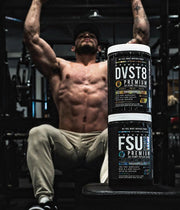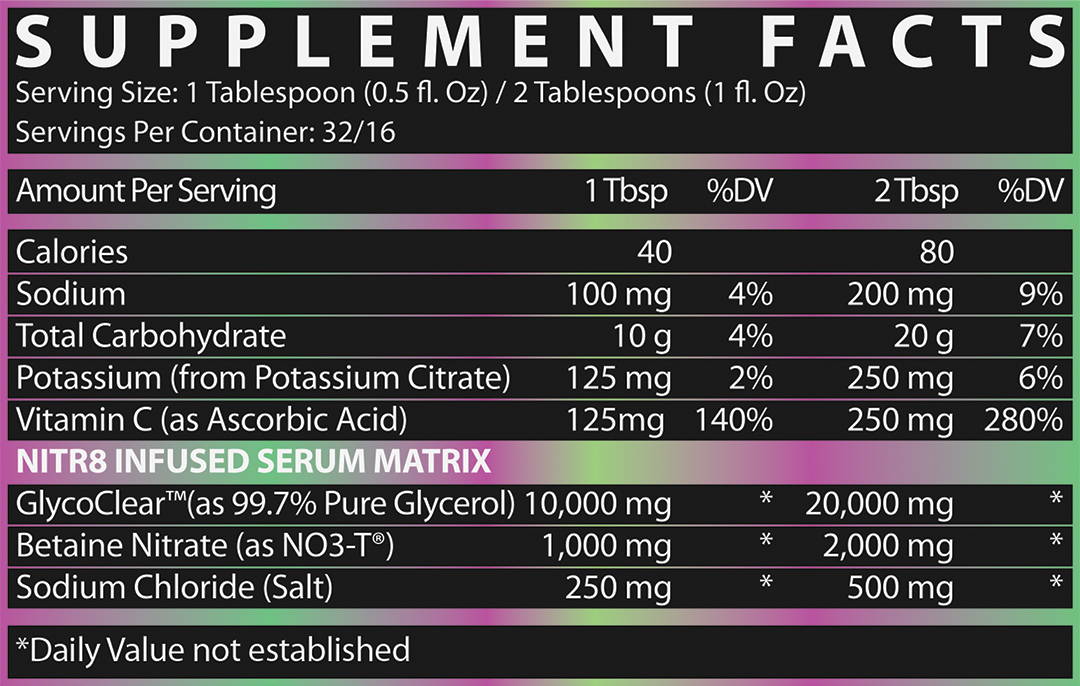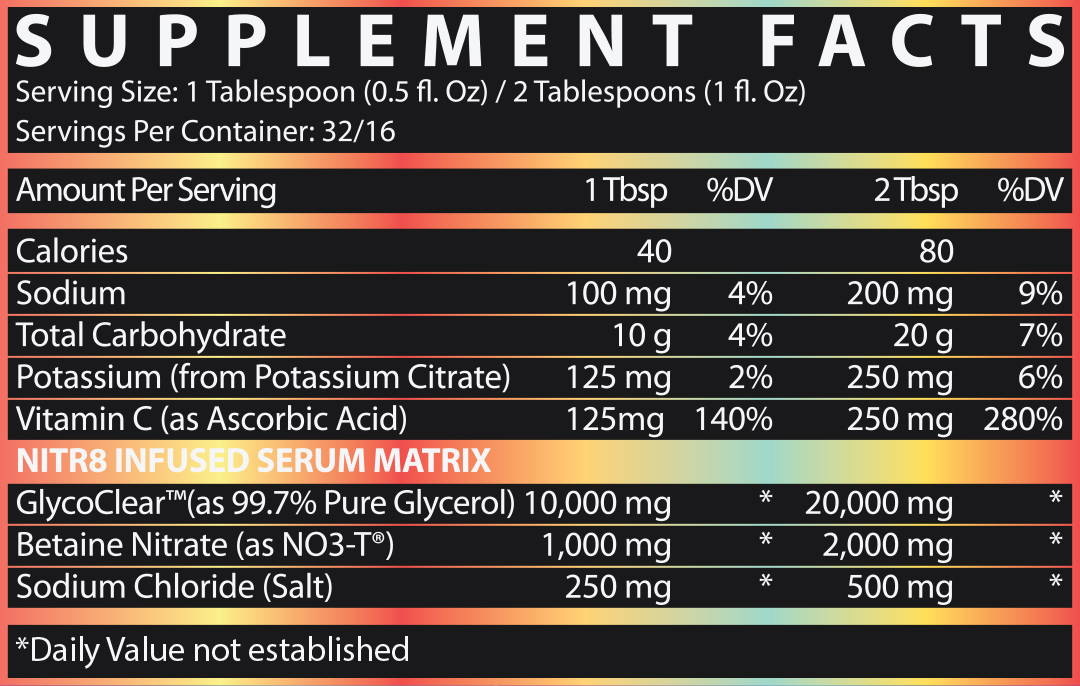Simon P V R, Mark A O, Robert G F,et al; Nutrition reviews; 2009; 67(12; 690-705;
Baba, H et al; “Glycerol gluconeogenesis in fasting humans.”; Nutrition (Burbank, Los Angeles County, Calif.); vol. 11,2; 1995; 149-53; https://pubmed.ncbi.nlm.nih.gov/7647479/
Ross, B D et al; “The rate of gluconeogenesis from various precursors in the perfused rat liver.”; The Biochemical journal; vol. 102,3; 1967; 942-51; https://www.ncbi.nlm.nih.gov/pmc/articles/PMC1270348/
Patlar, Suleyman et al; “The effect of glycerol supplements on aerobic and anaerobic performance of athletes and sedentary subjects.”; Journal of human kinetics; vol. 34; 2012; 69-79; doi:10.2478/v10078-012-0065-x; https://www.ncbi.nlm.nih.gov/pmc/articles/PMC3590833/
Patlar, Suleyman et al; “The effect of glycerol supplements on aerobic and anaerobic performance of athletes and sedentary subjects.”; Journal of human kinetics; vol. 34; 2012; 69-79; doi:10.2478/v10078-012-0065-x; https://www.ncbi.nlm.nih.gov/pmc/articles/PMC3590833/
Thein, L A et al. “Ergogenic aids.” Physical therapy vol. 75,5 (1995): 426-39. doi:10.1093/ptj/75.5.426 https://academic.oup.com/ptj/article-abstract/75/5/426/2632902?redirectedFrom=fulltext&login=false
Cholewa, Jason M et al. “Effects of betaine on body composition, performance, and homocysteine thiolactone.” Journal of the International Society of Sports Nutrition vol. 10,1 39. 22 Aug. 2013, doi:10.1186/1550-2783-10-39; https://www.ncbi.nlm.nih.gov/pmc/articles/PMC3844502/
Prasad K. Homocysteine, a Risk Factor for Cardiovascular Disease. Int J Angiol. 1999 Jan;8(1):76-86. doi: 10.1007/BF01616850; https://www.thieme-connect.de/products/ejournals/abstract/10.1007/BF01616850
Boel De Paepe; “Osmolytes as Mediators of the Muscle Tissue’s Responses to Inflammation: Emerging Regulators of Myositis with Therapeutic Potential”; EMJ Rheumatol. 2017;4[4]:83-89; https://www.emjreviews.com/rheumatology/article/osmolytes-as-mediators-of-the-muscle-tissues-responses-to-inflammation-emerging-regulators-of-myositis-with-therapeutic-potential/
Caldas, Teresa, et al. “Thermoprotection by Glycine Betaine and Choline.” Microbiology, vol. 145, no. 9, 1 Sept. 1999, pp. 2543–2548, 10.1099/00221287-145-9-2543; https://pubmed.ncbi.nlm.nih.gov/10517607/
Roti, M; “Homocysteine, Lipid and Glucose Responses to Betaine Supplementation During Running in the Heat”; Medicine & Science in Sports & Exercise: May 2003 – Volume 35 – Issue 5 – p S271; https://journals.lww.com/acsm-msse/Fulltext/2003/05001/HOMOCYSTEINE,_LIPID_AND_GLUCOSE_RESPONSES_TO.1501.aspx
Armstrong, Lawrence E, et al. “Influence of Betaine Consumption on Strenuous Running and Sprinting in a Hot Environment.” Journal of Strength and Conditioning Research, vol. 22, no. 3, May 2008, pp. 851–860, 10.1519/jsc.0b013e31816a6efb; https://pubmed.ncbi.nlm.nih.gov/18438230
Hoffman, Jay R, et al. “Effect of Betaine Supplementation on Power Performance and Fatigue.” Journal of the International Society of Sports Nutrition, vol. 6, no. 1, 27 Feb. 2009, 10.1186/1550-2783-6-7; https://jissn.biomedcentral.com/articles/10.1186/1550-2783-6-7
Lee, Elaine C, et al. “Ergogenic Effects of Betaine Supplementation on Strength and Power Performance.” Journal of the International Society of Sports Nutrition, vol. 7, no. 1, 2010, p. 27, 10.1186/1550-2783-7-27; https://jissn.biomedcentral.com/articles/10.1186/1550-2783-7-27
Trepanowski, John F, et al. “The Effects of Chronic Betaine Supplementation on Exercise Performance, Skeletal Muscle Oxygen Saturation and Associated Biochemical Parameters in Resistance Trained Men.” Journal of Strength and Conditioning Research, vol. 25, no. 12, Dec. 2011, pp. 3461–3471, 10.1519/jsc.0b013e318217d48d; https://pubmed.ncbi.nlm.nih.gov/22080324/
Pryor, J Luke, et al. “Effect of Betaine Supplementation on Cycling Sprint Performance.” Journal of the International Society of Sports Nutrition, vol. 9, no. 1, 3 Apr. 2012, 10.1186/1550-2783-9-12; https://jissn.biomedcentral.com/articles/10.1186/1550-2783-9-12
Lundberg, Jon O., and Mirco Govoni. “Inorganic Nitrate Is a Possible Source for Systemic Generation of Nitric Oxide.” Free Radical Biology & Medicine, vol. 37, no. 3, 1 Aug. 2004, pp. 395–400, 10.1016/j.freeradbiomed.2004.04.027. https://pubmed.ncbi.nlm.nih.gov/15223073/
Qu, X. M., et al. “From Nitrate to Nitric Oxide: The Role of Salivary Glands and Oral Bacteria.” Journal of Dental Research, vol. 95, no. 13, 1 Dec. 2016, pp. 1452–1456, 10.1177/0022034516673019; https://pubmed.ncbi.nlm.nih.gov/27872324/
Eisenbrand, G., et al. “Nitrate and Nitrite in Saliva.” Oncology, vol. 37, no. 4, 1980, pp. 227–231, 10.1159/000225441; https://pubmed.ncbi.nlm.nih.gov/7443155/
Larsen, F; “Effects of dietary nitrate on oxygen cost during exercise”; Department of Physiology and Pharmacology, Karolinska Institutet; 2007; https://pubmed.ncbi.nlm.nih.gov/17635415/
Lansley, K; “Dietary nitrate supplementation reduces the O2 cost of walking and running: a placebo-controlled study”; School of Sport and Health Sciences, Univ. of Exeter; 2011; https://journals.physiology.org/doi/full/10.1152/japplphysiol.01070.2010
Bailey, S; “Dietary nitrate supplementation reduces the O2 cost of low-intensity exercise and enhances tolerance to high-intensity exercise in humans”; School of Sport and Health Sciences, Univ. of Exeter; 2009; https://journals.physiology.org/doi/full/10.1152/japplphysiol.00722.2009
Bescos, R; “Acute administration of inorganic nitrate reduces VO(2peak) in endurance athletes”; National Institute of Physical Education-Barcelona, University of Barcelona; 2011; https://pubmed.ncbi.nlm.nih.gov/21407132/
Strazzullo P., Leclercq C.; “Sodium.” Advanced Nutrition; March 2014; 5(2) 188-190; https://www.ncbi.nlm.nih.gov/pmc/articles/PMC3951800/
Valentine, V. 2007. “The Importance of Salt in the Athlete’s Diet.” Current Sports Medicine Reports vol. 6,4 (2007): 237-40. https://pubmed.ncbi.nlm.nih.gov/17617999/
O’Donnell M, Mente A, Yusuf S. Sodium intake and cardiovascular health. Circ Res. 2015 Mar 13;116(6):1046-57. doi: 10.1161/CIRCRESAHA.116.303771; https://www.ahajournals.org/doi/10.1161/CIRCRESAHA.116.303771
Weaver, Connie M. “Potassium and Health.” Advances in Nutrition, vol. 4, no. 3, 1 May 2013, pp. 368S377S, 10.3945/an.112.003533; https://www.ncbi.nlm.nih.gov/labs/pmc/articles/PMC3650509/
Lemann, Jacob, et al. “Potassium Administration Increases and Potassium Deprivation Reduces Urinary Calcium Excretion in Healthy Adults.” Kidney International, vol. 39, no. 5, May 1991, pp. 973–983, 10.1038/ki.1991.123; https://pubmed.ncbi.nlm.nih.gov/1648646/
Gregory, Naina Sinha, et al. “Potassium Citrate Decreases Bone Resorption in Postmenopausal Women with Osteopenia: A Randomized, Double-Blind Clinical Trial” Endocrine Practice, vol. 21, no. 12, Dec. 2015, pp. 1380–1386, 10.4158/ep15738.or; https://www.ncbi.nlm.nih.gov/labs/pmc/articles/PMC5558825/
Fulgoni, Victor L., et al. “Foods, Fortificants, and Supplements: Where Do Americans Get Their Nutrients?” The Journal of Nutrition, vol. 141, no. 10, 24 Aug. 2011, pp. 1847–1854, 10.3945/jn.111.142257; https://www.ncbi.nlm.nih.gov/labs/pmc/articles/PMC3174857/
Cook, Nancy R. “Joint Effects of Sodium and Potassium Intake on Subsequent Cardiovascular Disease.” Archives of Internal Medicine, vol. 169, no. 1, 12 Jan. 2009, p. 32, 10.1001/archinternmed.2008.523; https://www.ncbi.nlm.nih.gov/labs/pmc/articles/PMC2629129/
Adrogué, Horacio J., and Nicolaos E. Madias. “Sodium and Potassium in the Pathogenesis of Hypertension.” New England Journal of Medicine, vol. 356, no. 19, 10 May 2007, pp. 1966–1978, 10.1056/nejmra064486; https://pubmed.ncbi.nlm.nih.gov/17494929/
Dyer, Alan R., et al. “Urinary Electrolyte Excretion in 24 Hours and Blood Pressure in the INTERSALT Study.” American Journal of Epidemiology, vol. 139, no. 9, 1 May 1994, pp. 940–951, 10.1093/oxfordjournals.aje.a117100; https://www.ncbi.nlm.nih.gov/pubmed/8166144
Elliott, P., et al. “Intersalt Revisited: Further Analyses of 24 Hour Sodium Excretion and Blood Pressure within and across Populations.” BMJ, vol. 312, no. 7041, 18 May 1996, pp. 1249–1253, www.bmj.com/content/312/7041/1249, 10.1136/bmj.312.7041.1249; https://www.ncbi.nlm.nih.gov/labs/pmc/articles/PMC2351086/
Cook, N. R., et al. “Effect of Change in Sodium Excretion on Change in Blood Pressure Corrected for Measurement Error. The Trials of Hypertension Prevention, Phase I.” American Journal of Epidemiology, vol. 148, no. 5, 1 Sept. 1998, pp. 431–444, 10.1093/oxfordjournals.aje.a009668; https://www.ncbi.nlm.nih.gov/pubmed/9737555
Khaw, K T, and E Barrett-Connor. “The Association between Blood Pressure, Age, and Dietary Sodium and Potassium: A Population Study.” Circulation, vol. 77, no. 1, Jan. 1988, pp. 53–61, 10.1161/01.cir.77.1.53; https://www.ncbi.nlm.nih.gov/pubmed/3257173
Xie, J. X., et al. “The Relationship between Urinary Cations Obtained from the INTERSALT Study and Cerebrovascular Mortality.” Journal of Human Hypertension, vol. 6, no. 1, 1 Feb. 1992, pp. 17–21; https://www.ncbi.nlm.nih.gov/pubmed/1583625
Haddy, Francis J., et al. “Role of Potassium in Regulating Blood Flow and Blood Pressure.” American Journal of Physiology. Regulatory, Integrative and Comparative Physiology, vol. 290, no. 3, 1 Mar. 2006, pp. R546-552, 10.1152/ajpregu.00491.2005; https://journals.physiology.org/doi/full/10.1152/ajpregu.00491.2005
Amberg, Gregory C., et al. “Modulation of the Molecular Composition of Large Conductance, Ca2+ Activated K+ Channels in Vascular Smooth Muscle during Hypertension.” Journal of Clinical Investigation, vol. 112, no. 5, 1 Sept. 2003, p. 717, 10.1172/JCI18684; https://www.ncbi.nlm.nih.gov/labs/pmc/articles/PMC182211/









